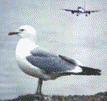Bird Strike Committee Proceedings

Bird Strike Committee-USA/Canada Joint Annual Meeting: 8th (2006)
Date of this Version
August 2006
Document Type
Article
Abstract
Assessing wildlife hazards to aviation in the airport environment is typically initiated by conducting a Wildlife Hazard Assessment (WHA). Ecological relationships between wildlife populations and habitat are usually discerned through observations during the course of one annual cycle. Although proximate hazards, on the airport, are well defined during the WHA process, off-airport features also can attract wildlife. Wildlife species can transit airport property traveling to and from habitat attractants. During a WHA, common wildlife sampling techniques are employed to determine species, their approximate numbers, and through association an index of potentially attractive habitat. Continuous observations could provide a more complete picture but would require greater sampling effort. Radar is a tool that has demonstrated efficacy to automatically monitor wildlife at greater distances than can be achieved through traditional techniques. Modern systems also have the ability to record a variety of spatial and temporal variables simultaneously and processed data streams can be further analyzed. In association with GIS software, these data can be queried to provide hazard and risk mapping on the airfield and in the approach/departure corridors, as well as the air traffic pattern. The use of radar in combination with traditional wildlife observation techniques could significantly increase the amount of information available for analyses during a WHA. At MCAS Cherry Point we used radar observations to document winter waterfowl movements at night (including migration departures) as well as diurnal bird movements. These movements included incursions into the approach/departure corridors and the initial location of the waterfowl presenting the hazard. Although radar has its benefits, such as detecting wildlife at night and greater distances than can be accomplished visually, it also has its shortcomings. These include reduced sensitivity during heavy precipitation (e.g., X- and K-band radars) and the inability to identify the species of the birds detected.

